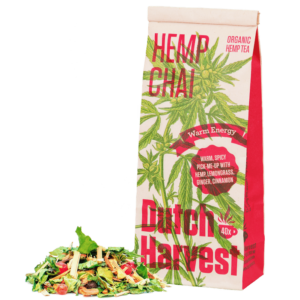Around 11,000 BC, the area stretching from the Nile Valley to Israel, Lebanon, Jordan, Syria and Iraq was the most fertile area. This area is called the Fertile Crescent. So it's no wonder the first farmers lived here.
The first people had always been hunters and collectors and were chasing their food. However, this changed during the agricultural revolution. This revolution is also called the Neolithic revolution. It was the beginning of a new era in history. The time for this revolution is called the Middle Stone Age. The time after the revolution is called the New Stone Age, also called Neolithic. This epoch owes its name to the fact that people first made utensils out of pottery.
But during the agricultural revolution, they made an even bigger discovery than making pottery utensils. For the first time in history, they started growing cereals and other edible plants. We don't know exactly how humans invented agriculture, but there are several theories about it.
According to the Oasis theory, the soil in the Near East had become very dry and barren thanks to the end of the Last Ice Age. As a result, the people and animals were drawn to the only places where there was still fertile soil. This was in the oases and along the rivers. But this theory is not true because the remains of the first agricultural settlements were found mainly on mountain slopes.
Another theory comes from Professor Hillman. He discovered during excavations that the hunter-gatherers in Syria were carrying tame grains. As a result, he concluded that they had collected and started growing the grains, which first grew in the wild. They were forced to do so because many wild grains went extinct around 13,000 BC due to a cold, dry period.
The agricultural revolution caused the sedentary revolution. Sedentary means permanent residence. In the sedentary revolution, the first man was given a permanent residence for the first time. They continued to live near their fields and went to keep cattle for meat, wool or milk. They learned to build better houses and made tools to work the land. The invention of the sickle and the plough ensured that more and more food could be grown. The villages got bigger because more children were born. They also started trading in the food that was left over. For example, they traded it for obsidian. This is a very strong, black volcanic grass that they could make tools out of.
Around 7500 BC almost all cultures lived in the Fertile crescent of agriculture. It took another 2,200 years for the agricultural revolution to reach the Netherlands. About 5300 bc, the first limburg fields were built. Around 4000 BC this also happened in Drenthe.
In Drenthe there were many huge boulders. These boulders had landed on the Drentse land from Scandinavia during the ice age. The farmers couldn't use these boulders in their fields. That's why they decided to use the boulders as a grave. How they were able to move and stack the heavy boulders is still a mystery. Some stones weigh more than 25,000 kilos. You can still admire these tombs of stone. We call it hunebedden. These hunebedden

